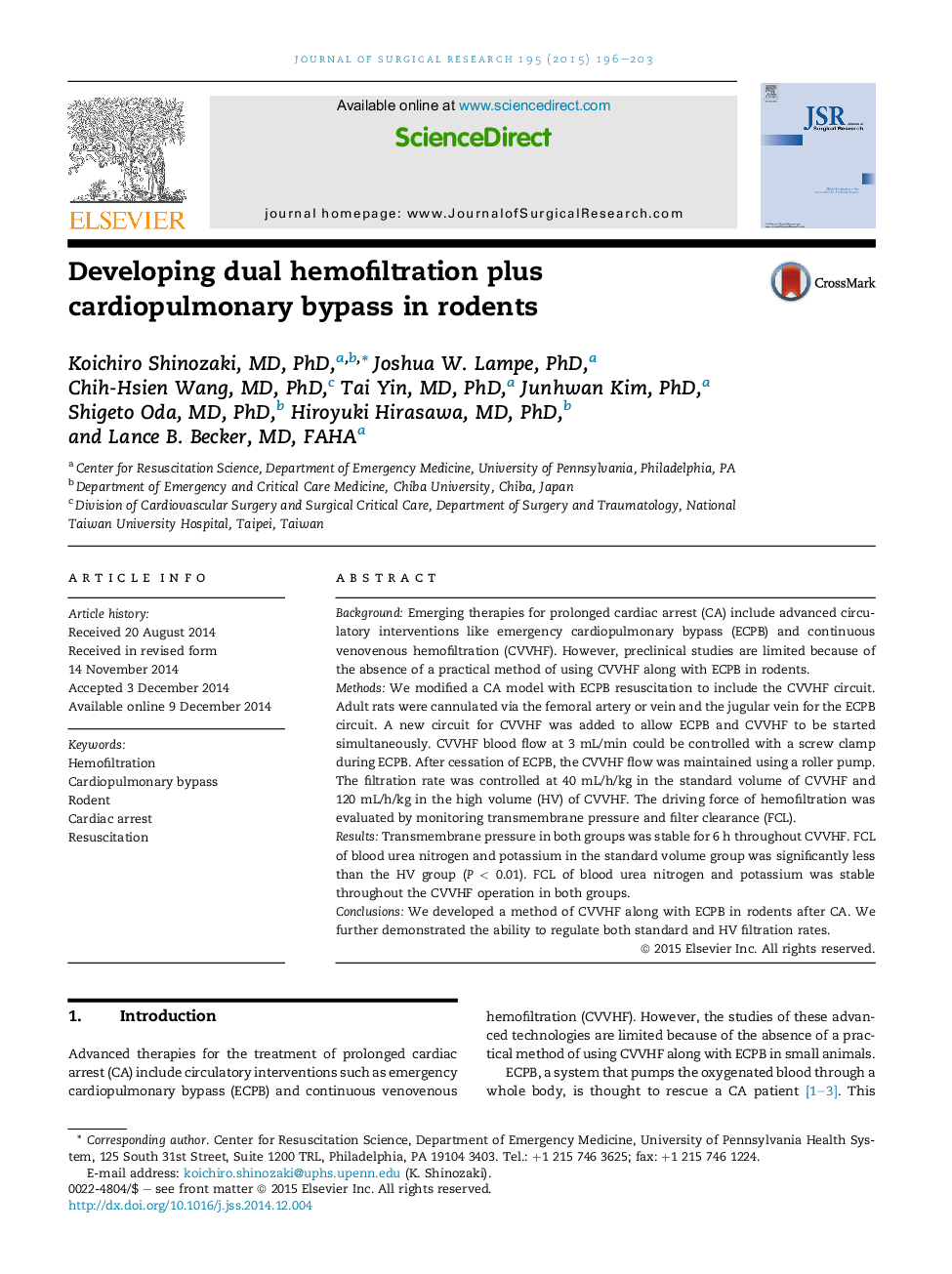| Article ID | Journal | Published Year | Pages | File Type |
|---|---|---|---|---|
| 4299889 | Journal of Surgical Research | 2015 | 8 Pages |
BackgroundEmerging therapies for prolonged cardiac arrest (CA) include advanced circulatory interventions like emergency cardiopulmonary bypass (ECPB) and continuous venovenous hemofiltration (CVVHF). However, preclinical studies are limited because of the absence of a practical method of using CVVHF along with ECPB in rodents.MethodsWe modified a CA model with ECPB resuscitation to include the CVVHF circuit. Adult rats were cannulated via the femoral artery or vein and the jugular vein for the ECPB circuit. A new circuit for CVVHF was added to allow ECPB and CVVHF to be started simultaneously. CVVHF blood flow at 3 mL/min could be controlled with a screw clamp during ECPB. After cessation of ECPB, the CVVHF flow was maintained using a roller pump. The filtration rate was controlled at 40 mL/h/kg in the standard volume of CVVHF and 120 mL/h/kg in the high volume (HV) of CVVHF. The driving force of hemofiltration was evaluated by monitoring transmembrane pressure and filter clearance (FCL).ResultsTransmembrane pressure in both groups was stable for 6 h throughout CVVHF. FCL of blood urea nitrogen and potassium in the standard volume group was significantly less than the HV group (P < 0.01). FCL of blood urea nitrogen and potassium was stable throughout the CVVHF operation in both groups.ConclusionsWe developed a method of CVVHF along with ECPB in rodents after CA. We further demonstrated the ability to regulate both standard and HV filtration rates.
